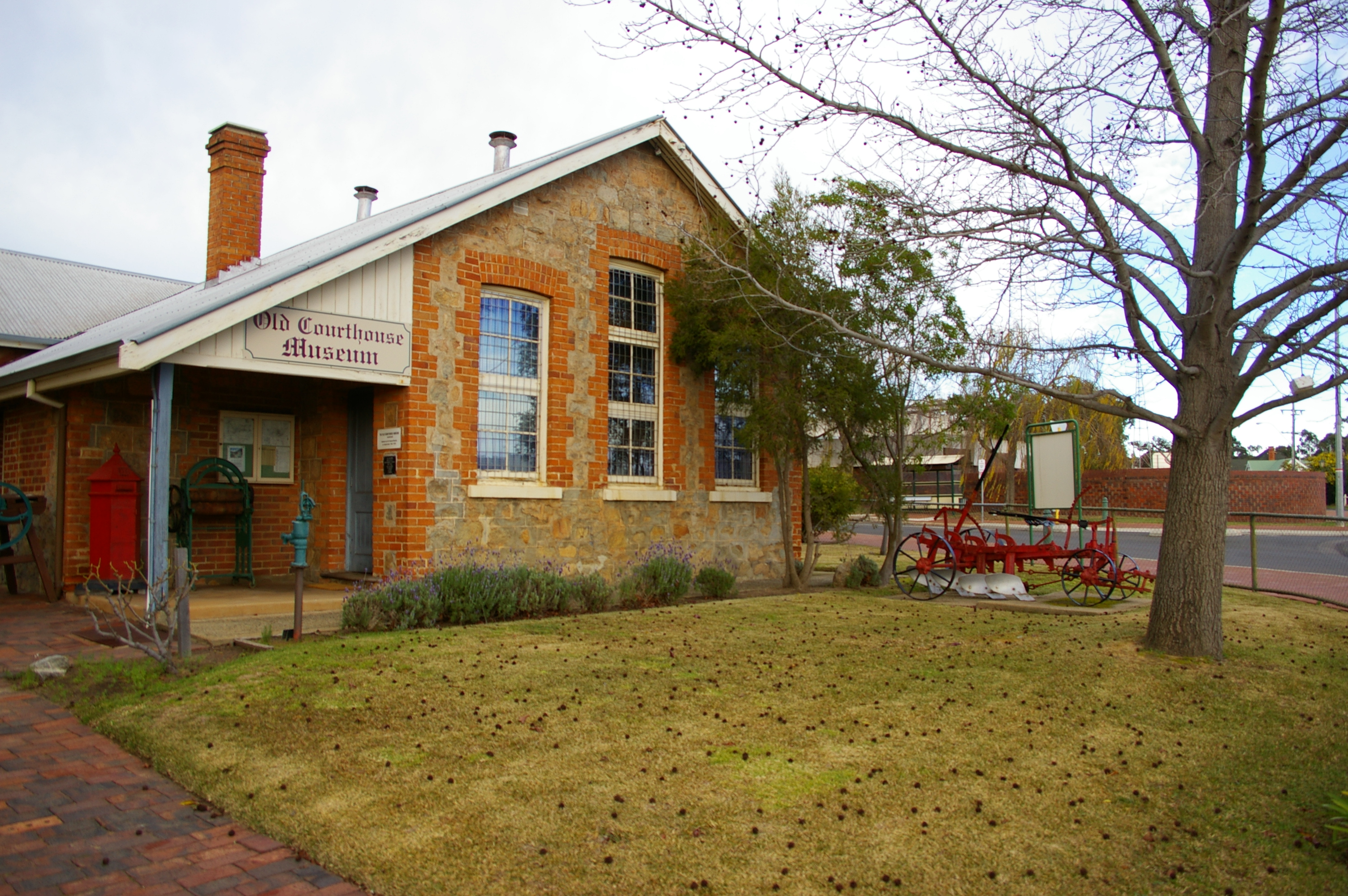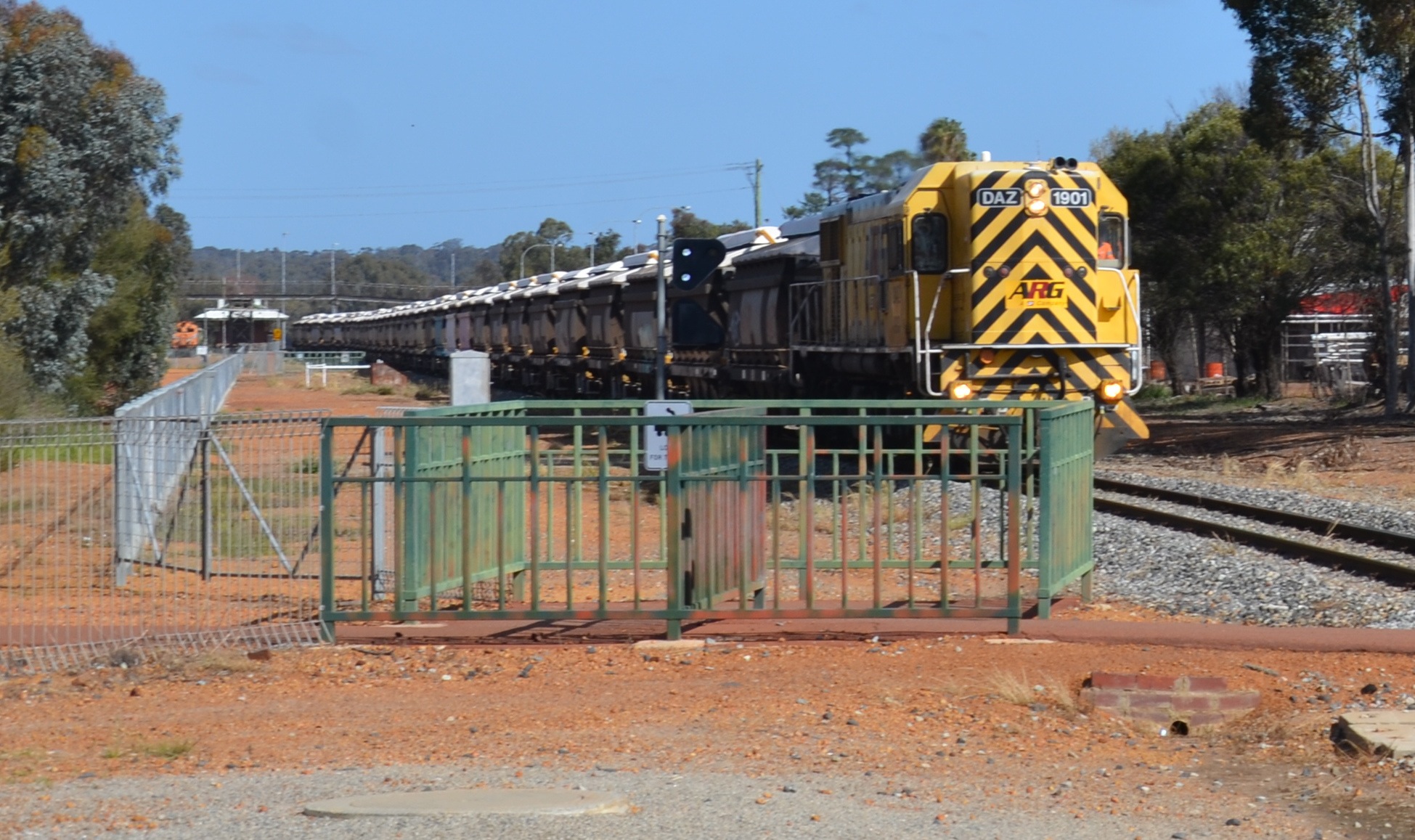Narrogin, Western Australia on:
[Wikipedia]
[Google]
[Amazon]


 Narrogin is a town in the Wheatbelt region of Western Australia, southeast of
Narrogin is a town in the Wheatbelt region of Western Australia, southeast of
Shire of Narrogin''Narrogin Observer'' newspaperNarrogin Cemetery deceased records and online map
at Chronicle Cemetery Map {{authority control Towns in Western Australia Australian Grand Prix Grain receival points of Western Australia Shire of Narrogin
Perth
Perth () is the list of Australian capital cities, capital city of Western Australia. It is the list of cities in Australia by population, fourth-most-populous city in Australia, with a population of over 2.3 million within Greater Perth . The ...
on the Great Southern Highway
Great Southern Highway is a highway in the southern Wheatbelt region of Western Australia, starting from Great Eastern Highway at The Lakes, from Perth, and ending at Albany Highway near Cranbrook. It is the primary thoroughfare for this ...
between Pingelly and Wagin. In the age of steam engine
A steam engine is a heat engine that performs Work (physics), mechanical work using steam as its working fluid. The steam engine uses the force produced by steam pressure to push a piston back and forth inside a Cylinder (locomotive), cyl ...
s, Narrogin was one of the largest railway operation hubs in the southern part of Western Australia.
History
Narrogin is an Aboriginal name, having been first recorded as "Narroging" for a pool in this area in 1869. The meaning of the name is uncertain; various sources record it as "bat camp," "plenty of everything" or derived from "gnargagin" which means "place of water". The first Europeans into the Narrogin area were Alfred Hillman and his party, who surveyed the track between Perth and Albany in 1835. They passed west of the present site of Narrogin. In time they were followed by the occasional shepherd who drove his sheep into the area seeking good pastures. The area was settled in the 1860s and 1870s when pastoralists moved and settled in isolated outposts. The population was so scattered that there was no incentive to establish a town. Narrogin was officially declared a town in June 1897 and it was gazetted as a municipality on 13 April 1906. The early years of settlement were hard, with farmers relying onsandalwood
Sandalwood is a class of woods from trees in the genus ''Santalum''. The woods are heavy, yellow, and fine-grained, and, unlike many other aromatic woods, they retain their fragrance for decades. Sandalwood oil is extracted from the woods. Sanda ...
cutting and the bark from mallee trees (it was used as a tanning agent) to compensate for poor returns from wheat and sheep.
By early 1898 the population of the town was 60, 35 males and 25 females. The local agricultural hall was opened the same year by Frederick Piesse.
Rail centre
The arrival of the Great Southern Railway in July 1889 initiated the first hint of a town. The railway company was in search of good reliable watering points along the route from Perth to Albany. The company that had won the railway contract, the WA Land Company, duly purchased Narrogin pool, and it was around this pool that the town developed. Narrogin was connected to six separate railway destinations –York
York is a cathedral city in North Yorkshire, England, with Roman Britain, Roman origins, sited at the confluence of the rivers River Ouse, Yorkshire, Ouse and River Foss, Foss. It has many historic buildings and other structures, such as a Yor ...
, Wagin, Collie, Wickepin, Kulin and Boddington.
Narrogin remained a major rail centre until the late 1970s when competition from road transport saw a reduction in the railway's workforce. By 1987, Narrogin was very much in decline, largely as the result of altered working of engines through from Avon Yard. The station ceased to be served by scheduled passenger trains from 1978. The number of employees dropped from about 280 people to fewer than a dozen in 1995.
Narrogin today
Narrogin's previous role as a major railway junction has acted as an attractor for agricultural service industries as well as government departments and agencies. The town has accumulated significant public infrastructuremainly in the health and education areas. This infrastructure serves as the base for the modern regional centre that Narrogin has become today. The Old Court House Museum is a major attraction for tourists. The building was designed by the architectGeorge Temple-Poole
George Thomas Temple-Poole (born George Thomas Temple, 29 May 1856 – 27 February 1934) was a British architect and public servant, primarily known for his work in Western Australia from 1885.
As Superintendent of Public Works, and then Pri ...
and constructed in 1894. The building served as a Government school until 1905, when it became the local courthouse. A local branch of the Agricultural Bank was housed in the building between 1924 and 1945, but in 1970 it was converted again into the local courthouse. Since 1976, the building has been used as a museum, exhibiting displays of regional memorabilia.
The surrounding areas produce wheat and other cereal crops. The town is a receival site for Cooperative Bulk Handling.
Climate
Narrogin has aMediterranean climate
A Mediterranean climate ( ), also called a dry summer climate, described by Köppen and Trewartha as ''Cs'', is a temperate climate type that occurs in the lower mid-latitudes (normally 30 to 44 north and south latitude). Such climates typic ...
characterised by hot, dry summers and cool, wet winters.
The highest temperature recorded in Narrogin was on 3 February 2007; the lowest temperature recorded was on 6 September 1956. Narrogin's highest daily rainfall occurred on 29 January 1990 when of rain was recorded.
Sport
In 1951 the Australian Grand Prix was held on a circuit through the town's streets. The event attracted a crowd estimated at 35,000, and was won by Warwick Pratley driving an Australian developed car. An annual race meeting was held on a shorter circuit starting in 1948, replacing Pingelly as host of the Great Southern Flying 50. Racing in Narrogin ceased after the 1955 Le Mans disaster. The town also acts as a hub for sporting competitions in the surrounding regions. Facilities were improved in recent years with the development of the Narrogin Leisure Complex, which houses a indoor heated pool with leisure pool, gymnasium, café, squash courts, basketball stadiums as well as a world class wet synthetic hockey turf.Military history
DuringWorld War II
World War II or the Second World War (1 September 1939 – 2 September 1945) was a World war, global conflict between two coalitions: the Allies of World War II, Allies and the Axis powers. World War II by country, Nearly all of the wo ...
, Narrogin was the location of RAAF No.25 Inland Aircraft Fuel Depot, built in 1942 and closed on 14 June 1944. It was situated on Granite Road. Usually consisting of 4 tanks, 31 fuel depots were built across Australia for the storage and supply of aircraft fuel for the RAAF
The Royal Australian Air Force (RAAF) is the principal aerial warfare force of Australia, a part of the Australian Defence Force (ADF) along with the Royal Australian Navy and the Australian Army. Constitutionally the governor-general of Aus ...
and the US Army Air Forces
The United States Army Air Forces (USAAF or AAF) was the major land-based aerial warfare service component of the United States Army and ''de facto'' aerial warfare service branch of the United States during and immediately after World War II ...
at a total cost of £900,000 ($1,800,000).
Notable residents
* Barry Cable, the starPerth
Perth () is the list of Australian capital cities, capital city of Western Australia. It is the list of cities in Australia by population, fourth-most-populous city in Australia, with a population of over 2.3 million within Greater Perth . The ...
and North Melbourne
North Melbourne is an inner-city suburb in Melbourne, Victoria (Australia), Victoria, Australia, north-west of Melbourne's Melbourne central business district, Central Business District, located within the City of Melbourne Local government ar ...
Australian Rules Football
Australian football, also called Australian rules football or Aussie rules, or more simply football or footy, is a contact sport played between two teams of 18 players on an Australian rules football playing field, oval field, often a modified ...
player came from Narrogin
* Albert Facey (1894–1982), author of '' A Fortunate Life'', lived a period of his life in Narrogin
* Bevan George, field hockey player who won the gold medal with the Australian Men's Team at the 2004 Summer Olympics
The 2004 Summer Olympics (), officially the Games of the XXVIII Olympiad (), and officially branded as Athens 2004 (), were an international multi-sport event held from 13 to 29 August 2004 in Athens, Greece.
The Games saw 10,625 athletes ...
in Athens
* Brian Glencross, a retired Australian field hockey
Field hockey (or simply referred to as hockey in some countries where ice hockey is not popular) is a team sport structured in standard hockey format, in which each team plays with 11 players in total, made up of 10 field players and a goalk ...
player and coach of the Australian Women's Team
* Brad Hogg, retired Australian cricketer, current player of the Melbourne Renegades and former player for the Perth Scorchers
* Shaun Marsh
Shaun Edward Marsh (born 9 July 1983) is an Australian cricketer who previously played for the Western Australia cricket team in Australian domestic cricket and has represented Australian national cricket team, Australia in all three formats. Ni ...
, Australian cricketer and the elder son of retired cricketer Geoff Marsh
Geoffrey Robert Marsh (born 31 December 1958) is an Australian former cricketer, coach and selector. He played 50 Test cricket, Test matches and 117 One Day Internationals for Australia national cricket team, Australia as an Batting order (cr ...
* Matthew Tonts, Professor of Geography, The University of Western Australia
University of Western Australia (UWA) is a public research university in the Australian state of Western Australia. The university's main campus is in Crawley, a suburb in the City of Perth local government area. UWA was established in 1911 by ...
and Chair of the Western Australian Environmental Protection Authority was born and grew up in Narrogin
* Mudrooroo, novelist, poet, essayist and playwright, was born in Narrogin.
* Rex T. Prider (1910–2005), Professor of Geology, University of Western Australia (1949–1975), was born and grew up in Narrogin
* Stephen Smith, an Australian Labor Party politician
See also
* Narrogin Senior High SchoolReferences
External links
Shire of Narrogin
at Chronicle Cemetery Map {{authority control Towns in Western Australia Australian Grand Prix Grain receival points of Western Australia Shire of Narrogin